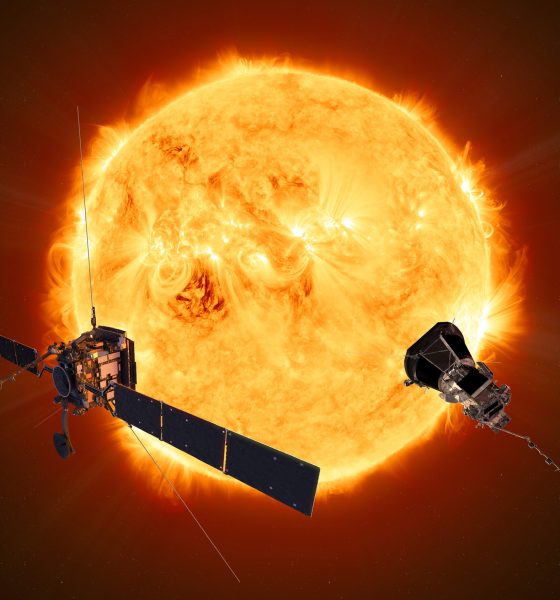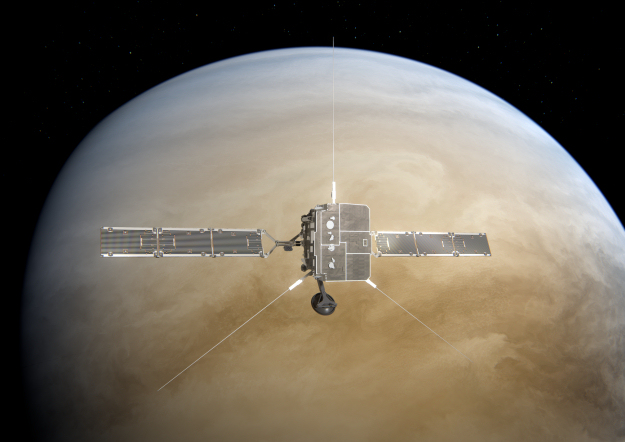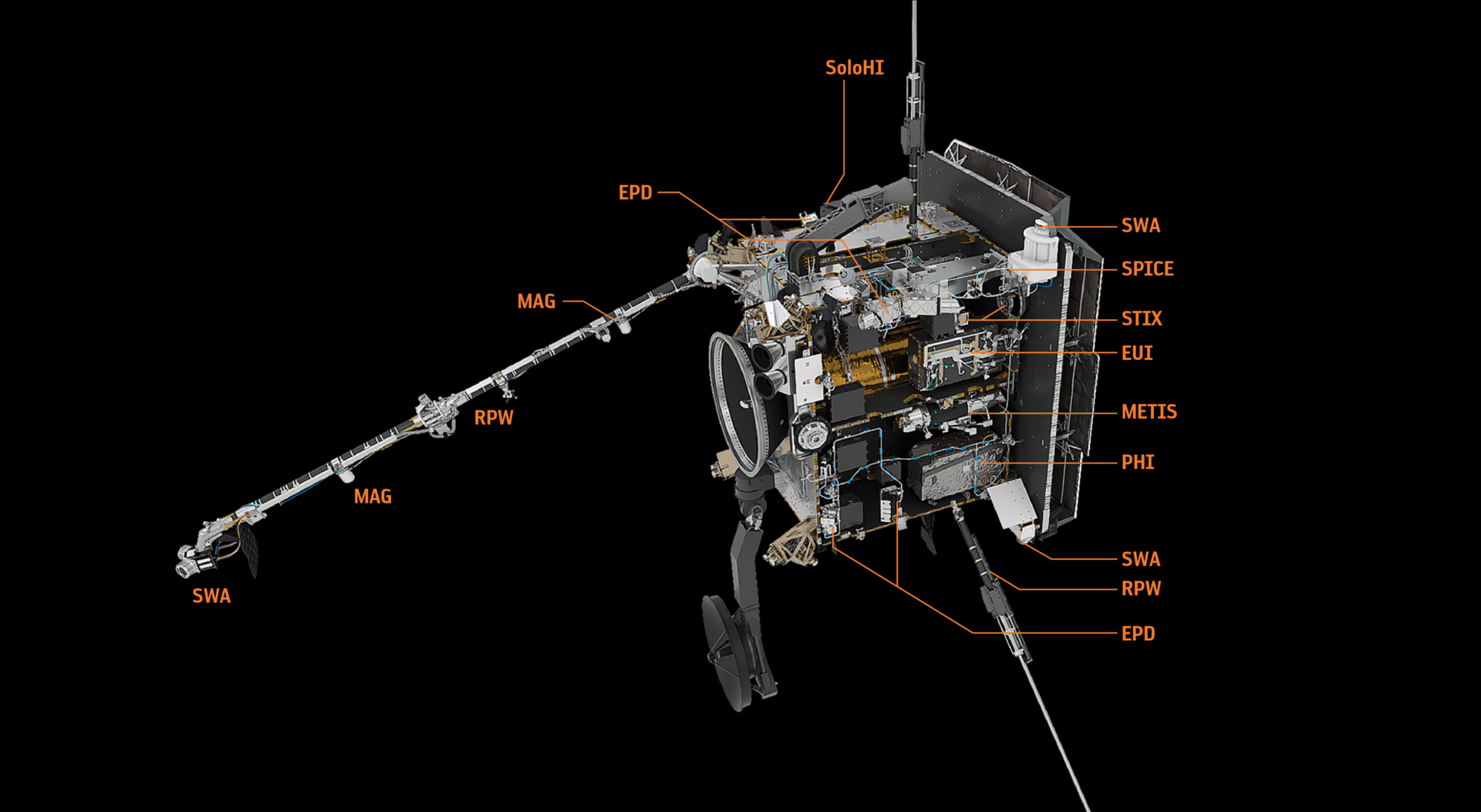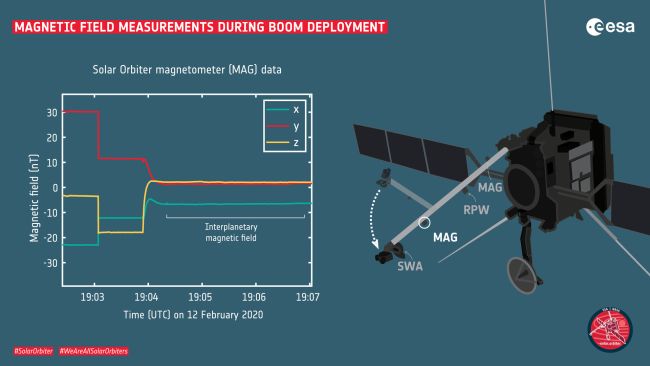

Space
Solar Orbiter heads to the sun in mission to unravel its mysteries, takes first space measurements
The European Space Agency’s (ESA) Solar Orbiter spacecraft is traveling through the cosmos. Its destination: the inner solar system. The 3,900-lb. (1,800-kg) spacecraft will work in tandem with NASA’s Parker Solar Probe to unravel solar mysteries that have puzzled scientists for decades.
The probe will spend the next two years cruising towards the sun and using both Venus and the Earth to slingshot itself out of the ecliptic plane — the area of space where all planets orbit. This vantage point will allow the spacecraft to eventually look down upon the sun’s polar regions and snap the very first images of this crucial area.
“We believe this area holds the keys to unraveling the mysteries of the sun’s activity cycle,” Daniel Müller, the mission’s ESA project scientist, said in a prelaunch science briefing on Feb. 7.
The Solar Orbiter and its suite of 10 specialized instruments will act as a mobile laboratory in space, tracking eruptions of solar materials from their origin on the surface of the sun, out into space, and all the way down to Earth.

“Our entire solar system is governed by the activity that comes from the sun,” Nicky Fox, director of NASA’s Heliophysics Division said during the mission’s science briefing. “There’s a continually streaming kind of soup of energetic particles that moves away from the sun and bathes all the planets. We call that the solar wind.”
Together, the solar wind and the sun’s magnetic field create a huge bubble known as the heliosphere, which shields the Earth from powerful interstellar radiation called cosmic rays.
Coronal mass ejections (CMEs) are energetic eruptions of solar material and when they make it to Earth, the solar particles can interact with our planet’s magnetic field to produce powerful electromagnetic fluctuations. Known as geomagnetic storms, they are troublesome because they’re known to disrupt technologies like communications systems and even power grids.
Additionally, they can also be dangerous to astronauts and satellites in space. Solar Orbiter will help mitigate damages from these types of storms by helping scientists better predict when they might happen.
Solar Orbiter launched atop an Atlas V rocket on Feb. 9 at 11:03 p.m. EST (0403 GMT on Feb. 10). About an hour after liftoff, the spacecraft separated from the rocket’s upper stage as planned, extended its solar arrays and sent a signal back to Earth that it had power.
The spacecraft then spent the next several days deploying its communication antennas as well as its instrument boom.

Its first three months are what’s known as a commissioning phase, during which ground controllers will check out the onboard instruments to make sure everything is in working order. Two years from now, the spacecraft will be close enough to take its first detailed measurements of the sun, but we didn’t have to wait that long for the first bits of science data to come in.
Solar Orbiter carries ten scientific instruments, four in situ (meaning they measure the environment around the spacecraft) and six remote-sensing imagers (which will measure the sun’s properties). The majority of the in situ instruments are located on a 4.4-m-long extendable boom. They study the electromagnetic characteristics of the solar wind, as well as the stream of charged particles flowing from the Sun.
“We measure magnetic fields thousands of times smaller than those we are familiar with on Earth,” Tim Horbury, principal investigator for the magnetometer (MAG) instrument on the Solar Orbiter, said in the statement. “Even currents in electrical wires make magnetic fields far larger than what we need to measure. That’s why our sensors are on a boom, to keep them away from all the electrical activity inside the spacecraft.”
Designed to measure the strength and direction of the magnetic field, the MAG (which is composed of two sensors) was the first instrument to send back data.

“The data we received shows how the magnetic field decreases from the vicinity of the spacecraft to where the instruments are actually deployed,” Horbury said in the same statement. “This is an independent confirmation that the boom actually deployed and that the instruments will, indeed, provide accurate scientific measurements in the future.”
The boom is a pole made constructed out of titanium and carbon-fiber that houses three instruments, which are so sensitive that they need to be kept away from the main body of the spacecraft to avoid potential electromagnetic disturbances.
“Measuring before, during, and after the boom deployment helps us to identify and characterize signals that are not linked to the solar wind, such as perturbations coming from the spacecraft platform and other instruments,” Matthieu Kretzschmar, lead co-investigator of the high-frequency magnetometer of the Radio and Plasma Waves instrument (RPW) instrument, which is also located on the boom and will study properties of the solar wind.
The team will continue to calibrate the spacecraft’s suite of instruments and will begin collecting official science data as early as May.

News
SpaceX shades airline for seeking contract with Amazon’s Starlink rival

SpaceX employees, including its CEO Elon Musk, shaded American Airlines on social media this past weekend due to the company’s reported talks with Amazon’s Starlink rival, Leo.
Starlink has been adopted by several airlines, including United Airlines, Qatar Airways, Hawaiian Airlines, WestJet, Air France, airBaltic, and others. It has gained notoriety as an extremely solid, dependable, and reliable option for airline travel, as traditional options frequently cause users to lose connection to the internet.
Many airlines have made the switch, while others continue to mull the options available to them. American Airlines is one of them.
A report from Bloomberg indicates the airline is thinking of going with a Starlink rival owned by Amazon, called Leo. It was previously referred to as Project Kuiper.
American CEO Robert Isom said (via Bloomberg):
“While there’s Starlink, there are other low-Earth-orbit satellite opportunities that we can look at. We’re making sure that American is going to have what our customers need.”
Isom also said American has been in touch with Amazon about installing Leo on its aircraft, but he would not reveal the status of any discussions with the company.
The report caught the attention of Michael Nicolls, the Vice President of Starlink Engineering at SpaceX, who said:
“Only fly on airlines with good connectivity… and only one source of good connectivity at the moment…”
CEO Elon Musk replied to Nicolls by stating that American Airlines risks losing “a lot of customers if their connectivity solution fails.”
American Airlines will lose a lot of customers if their connectivity solution fails
— Elon Musk (@elonmusk) December 14, 2025
There are over 8,000 Starlink satellites in orbit currently, offering internet coverage in over 150 countries and territories globally. SpaceX expands its array of satellites nearly every week with launches from California and Florida, aiming to offer internet access to everyone across the globe.
Currently, the company is focusing on expanding into new markets, such as Africa and Asia.
News
Tesla hints at Starlink integration with recent patent
“By employing polymer blends, some examples enable RF transmission from all the modules to satellites and other communication devices both inside and outside the vehicle.”

Tesla hinted at a potential Starlink internet terminal integration within its vehicles in a recent patent, which describes a vehicle roof assembly with integrated radio frequency (RF) transparency.
The patent, which is Pub. No U.S. 2025/0368267 describes a new vehicle roof that is made of RF-transparent polymer materials, allowing and “facilitating clear communication with external devices and satellites.”
Tesla believes that a new vehicle roof design, comprised of different materials than the standard metallic or glass elements used in cars today, would allow the company to integrate modern vehicular technologies, “particularly those requiring radio frequency transmission and reception.
Tesla has recently filed a US patent application on integrating RF transparent materials into the roof structure.
“facilitating clear communication with external devices and satellites”
Tesla fleet is getting @Starlink connectivity integration soon. LFG @Tesla @elonmusk… pic.twitter.com/bLa8YtPLd1
— Chansoo Byeon (@Chansoo) December 9, 2025
Instead of glass or metallic materials, Tesla says vehicles may benefit from high-strength polymer blends, such as Polycarbonate, Acrylonitrile Butadiene Styrene, or Acrylonitrile Styrene Acrylate.
These materials still provide ideal strength metrics for crashworthiness, stiffness for noise, vibration, and harshness control, and are compliant with head impact regulations.
They would also enable better performance with modern technologies, like internet terminals, which need an uninterrupted signal to satellites for maximum reception. Tesla writes in the patent:
“By employing polymer blends, some examples enable RF transmission from all the modules to satellites and other communication devices both inside and outside the vehicle.”

One of the challenges Tesla seems to be aware of with this type of roof design is the fact that it will still have to enable safety and keep that at the forefront of the design. As you can see in the illustration above, Tesla plans to use four layers to increase safety and rigidity, while also combating noise and vibration.
It notes in the patent that disclosed examples still meet the safety requirements outlined in the Federal Motor Vehicle Safety Standards (FMVSS).
Starlink integrated directly into Tesla vehicles would be a considerable advantage for owners. It would come with a handful of distinct advantages.
Initially, the inclusion of Starlink would completely eliminate cellular dead zones, something that is an issue, especially in rural areas. Starlink would provide connectivity in these remote regions and would ensure uninterrupted service during road trips and off-grid adventures.
It could also be a critical addition for Robotaxi, as it is crucial to have solid and reliable connectivity for remote monitoring and fleet management.
Starlink’s growing constellation, thanks to SpaceX’s routine and frequent launch schedule, will provide secure, stable, and reliable internet connectivity for Tesla vehicles.
Although many owners have already mounted Starlink Mini dishes under their glass roofs for a similar experience, it may be integrated directly into Teslas in the coming years, either as an upgrade or a standard feature.
Investor's Corner
SpaceX IPO is coming, CEO Elon Musk confirms
However, it appears Musk is ready for SpaceX to go public, as Ars Technica Senior Space Editor Eric Berger wrote an op-ed that indicated he thought SpaceX would go public soon. Musk replied, basically confirming it.

Elon Musk confirmed through a post on X that a SpaceX initial public offering (IPO) is on the way after hinting at it several times earlier this year.
It also comes one day after Bloomberg reported that SpaceX was aiming for a valuation of $1.5 trillion, adding that it wanted to raise $30 billion.
Musk has been transparent for most of the year that he wanted to try to figure out a way to get Tesla shareholders to invest in SpaceX, giving them access to the stock.
He has also recognized the issues of having a public stock, like litigation exposure, quarterly reporting pressures, and other inconveniences.
However, it appears Musk is ready for SpaceX to go public, as Ars Technica Senior Space Editor Eric Berger wrote an op-ed that indicated he thought SpaceX would go public soon.
Musk replied, basically confirming it:
As usual, Eric is accurate
— Elon Musk (@elonmusk) December 10, 2025
Berger believes the IPO would help support the need for $30 billion or more in capital needed to fund AI integration projects, such as space-based data centers and lunar satellite factories. Musk confirmed recently that SpaceX “will be doing” data centers in orbit.
AI appears to be a “key part” of SpaceX getting to Musk, Berger also wrote. When writing about whether or not Optimus is a viable project and product for the company, he says that none of that matters. Musk thinks it is, and that’s all that matters.
It seems like Musk has certainly mulled something this big for a very long time, and the idea of taking SpaceX public is not just likely; it is necessary for the company to get to Mars.
The details of when SpaceX will finally hit that public status are not known. Many of the reports that came out over the past few days indicate it would happen in 2026, so sooner rather than later.
But there are a lot of things on Musk’s plate early next year, especially with Cybercab production, the potential launch of Unsupervised Full Self-Driving, and the Roadster unveiling, all planned for Q1.








